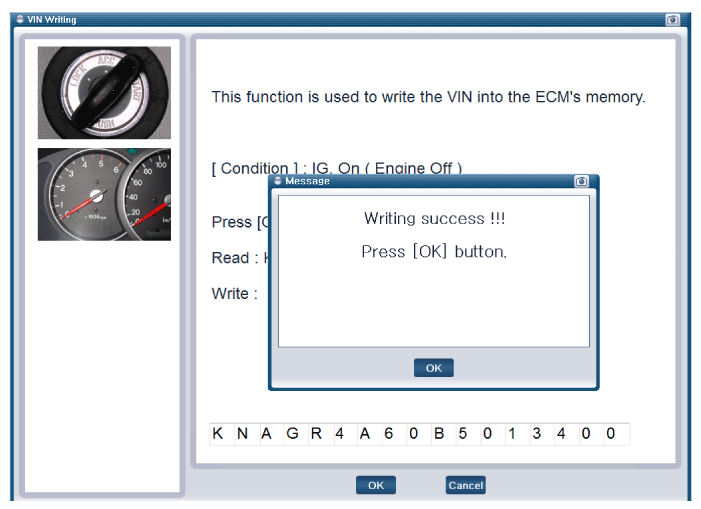|
When the receiver first arrives for
replacement:
| 1) |
It will be in Virgin State.
|
| 2) |
It will not be configured for any
specific platform. |
| 3) |
It will not have any sensor ID's
memorized. | |
|
It is important to make sure that the correct
receiver is used to replace the faulty part i.e. it must be Low Line
in order to have the correct inflation warning thresholds
set. |
| 1. |
Disconnect vehicle battery.
|
| 2. |
Remove the glove box.
(Refer to BD group - "Crash Pad")
|
| 3. |
Remove faulty part and fit bracket assembly to
new part.

|
| 4. |
Secure new part to vehicle and fit connector.
|
| 5. |
Re-connect battery and turn Ignition
on. |
| 6. |
Check that TREAD Lamp flash rate matches
Virgin State indication. |
| 7. |
After replacing the receiver, learn by using
self-diagnosis device(GDS). |
[Wheel Sensor ID Writing (Wireless)
initialization]
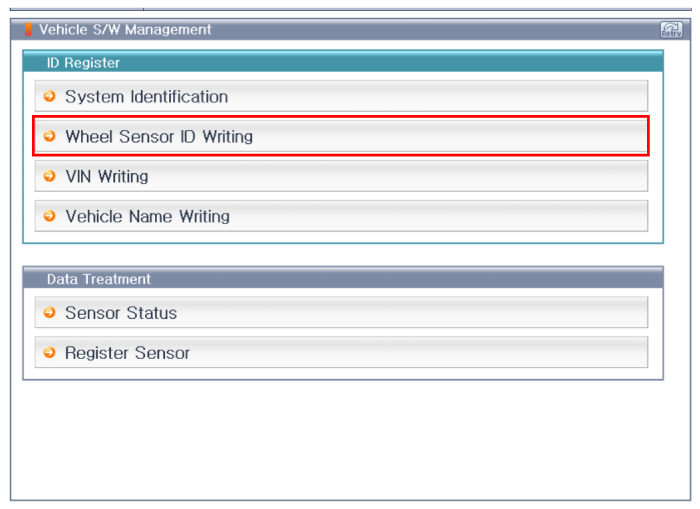
[Wheel Sensor ID Writing (Wireless) 1]
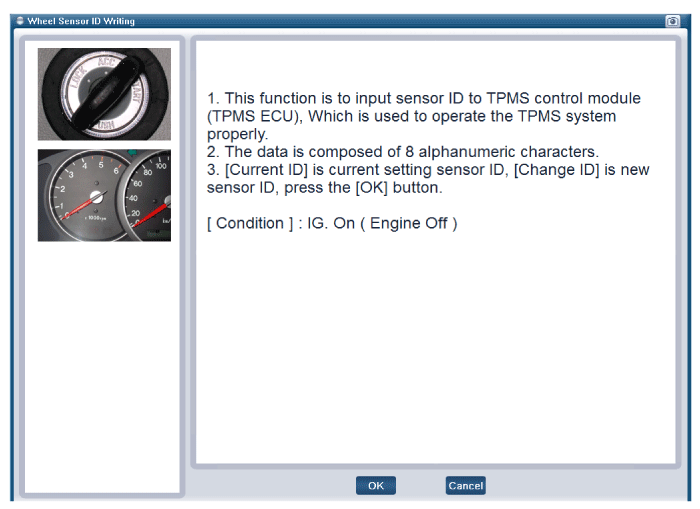
[Wheel Sensor ID Writing (Wireless) 2]
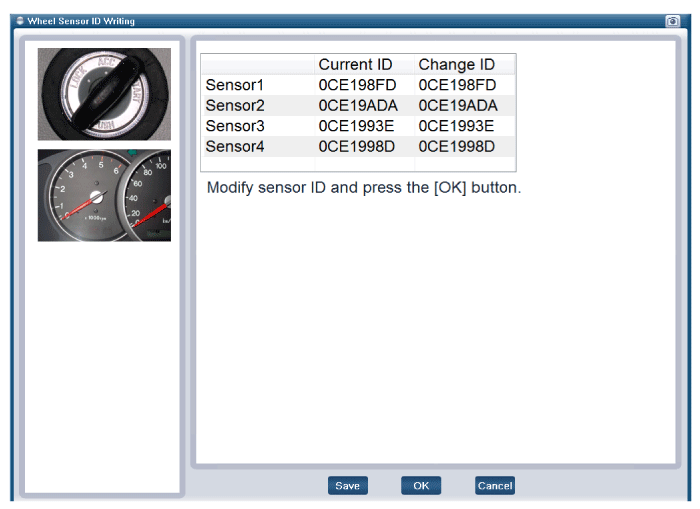
| Diagnosis procedure by using diagnostic
device |
As manual for diagnosis
methods by using diagnosis device, the main contents are as
follows:
| 1. |
Connect self-diagnosis connector(16pins)
located in the lower of driver side crash pad to self-diagnosis
device, and then turn the self-diagnosis device after key is
ON. |
| 2. |
Select the "vehicle model" and "TPMS" on GDS
vehicle selection screen, then select
OK. |
[Vehicle name input initialization]
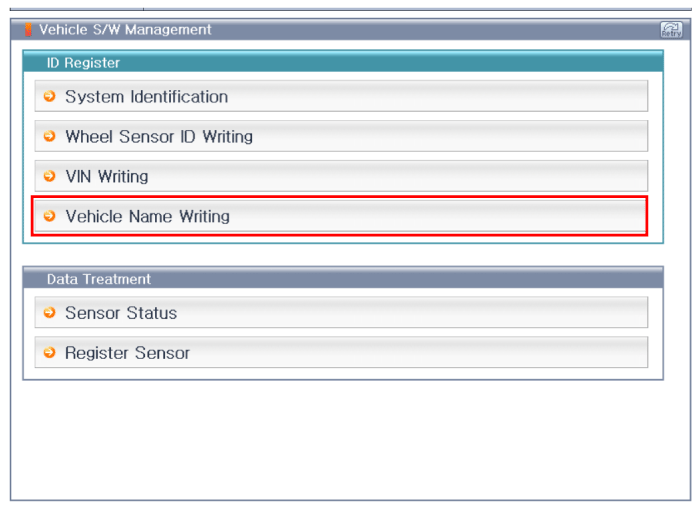
[Vehicle Name Writing 1]
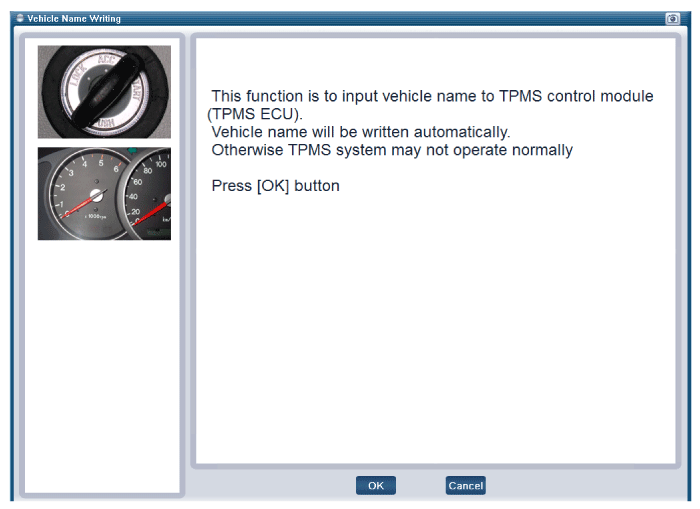
[Vehicle Name Writing 2]
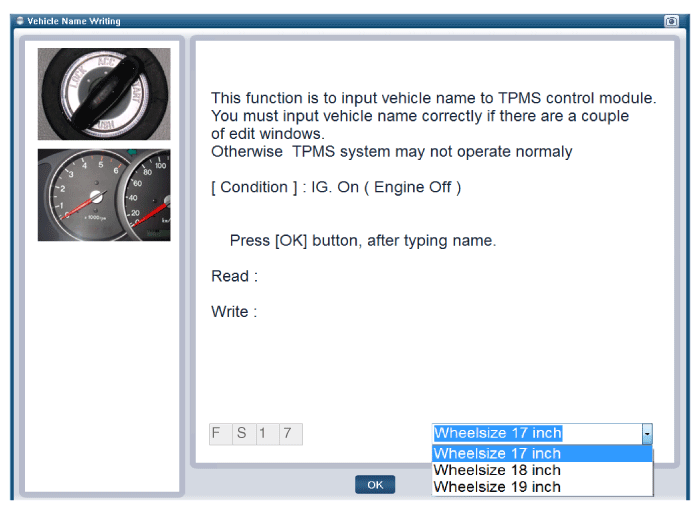
| •
|
Check the specifications for the vehicle
and the selected item option, press the OK button and enter is
completed. |
| •
|
When you input the vehicle name, check
the tire inch and exactly input inch option to device.
| |
[Vehicle Name Writing 3]
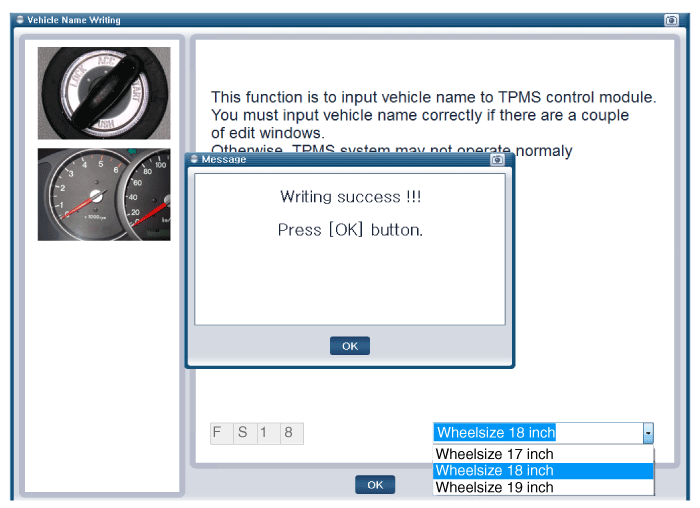
[VIN input initialization]
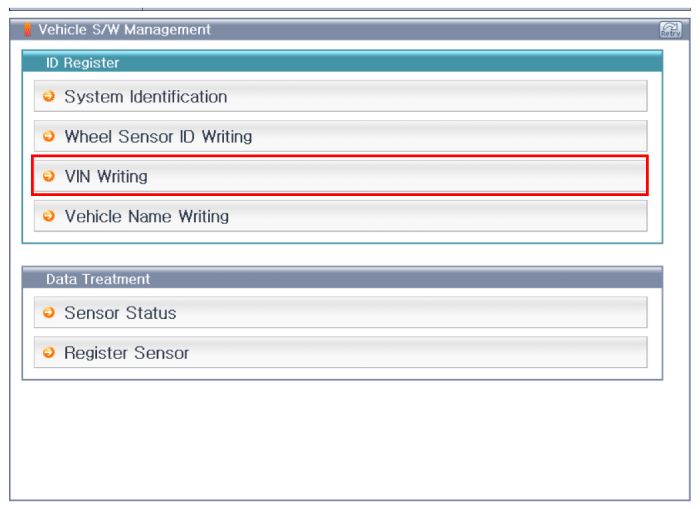
[VIN Writing 1]
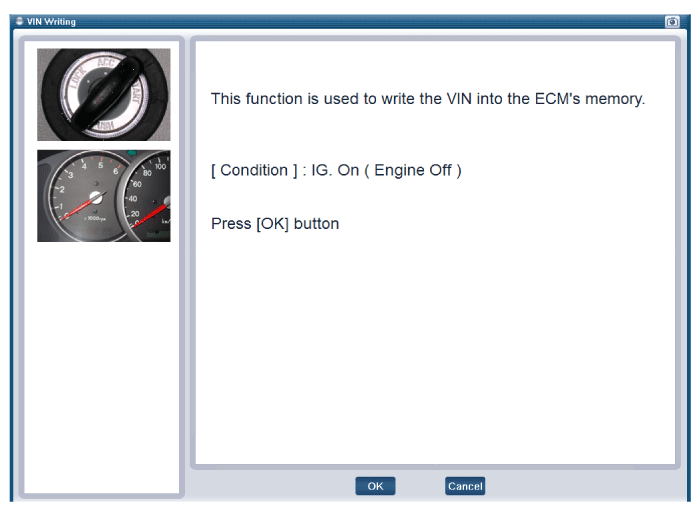
[VIN Writing 2]
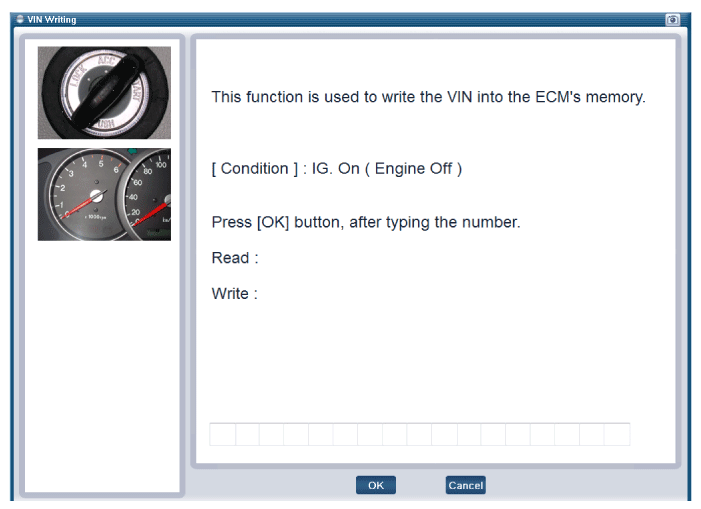
[VIN Writing 3]
